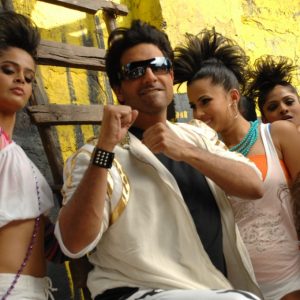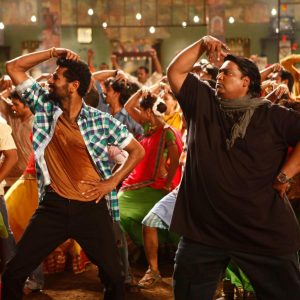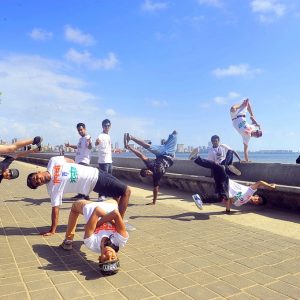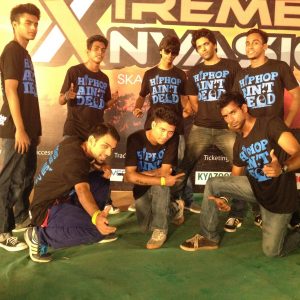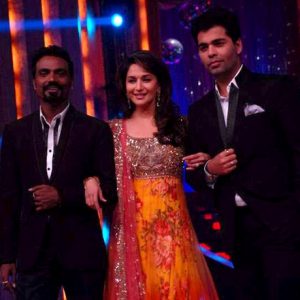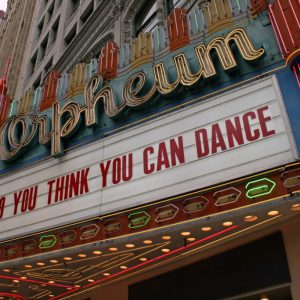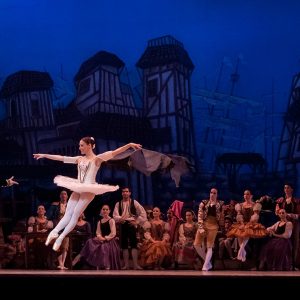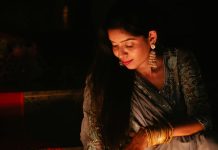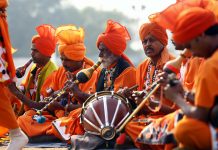A dynamic art, dance has always been the overshadowed little sister of her more stable siblings, Medicine and Engineering. Luckily though, we’re living in an age that is constantly exploding with new, previously unheard of careers. Whether it’s thanks to the age of start-ups or basically just the Internet, we’re happy to be part of this change, because it’s only helped your favourite extra-curricular hobby up its game and be considered a serious (and profitable) career.
Dance is a form of expression that transcends all age groups, mindsets and backgrounds – it brings out the happiness in your soul. If your mom, dad, chacha or neighbour have always called it “baby’s favourite pastime”, it’s time they do a double take. Dance schools are spreading like wild fire across the country, and it is quickly becoming a relatively sought-after career.
We live in a country where dance is synonymous with culture, being the birthplace of many recognized distinctive traditional dances. No, Bollywood’s not one of them, although it is a considerable option. No wonder, then, that we see dance in our everyday lives: be it dance classes, flash mobs, movies, even dance reality competition shows on television. Once you choose your niche – folk, classical or commercial – you can select a dance school that specializes in the same. Broadly speaking, the three career options that you have are choreography (think Remo D’Souza), teaching (think Shiamak Davar) and performing (no, not the Ganpati dance – think more Pandit Birju Maharaj).
Think of every new dance class you’ve heard of popping open at every nook and corner; of every aspiring choreographer who hopes to redefine dance with a single Salman Khan movement. The people behind it are not unlike you. They share the same passion, skill and love for dance with you – the only difference is they’ve gone ahead and chosen to make what they love a full-time job. Dance isn’t just what you do, dance becomes you.
From Bharatanatyam to Ballet: a world of a difference
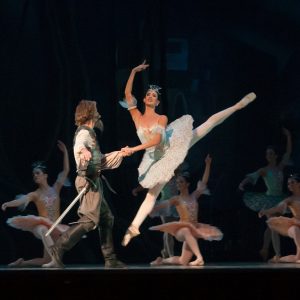
In the West, especially Greek civilisations, the human body was idealised and considered a crucible of energy. Most Western dance forms are an expression of action and energy, performed for theatrical or entertainment purposes.
When the Church separated Body from Soul in the Middle Ages, all Western dance forms became purely an expression of drama and reflection of man’s inner conflicts.
Ballet involves what is called a ‘single line’ movement, which means that the whole body is in sync.
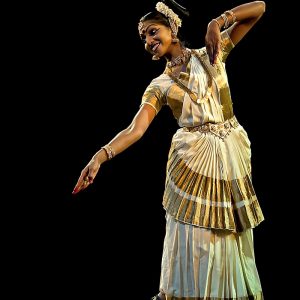
In the East, the human body was considered a spiritual engine that moves through the journey of life in search of nirvana. Indian dance forms are mainly an expression of contemplation; they were performed mainly to appease a deity, or as a spiritual expression.
Indian dance forms are always connected to religious or spiritual causes, where Earthly and spiritual conflicts take centre stage.
In Indian classical, the movements are all encompassing; the feet move in rhythm to the music while the hands tell the story along with the body movements. Which means, sometimes the hands could move at a higher speed than the feet, as they don’t move in correspondence.
In Western dances, such as ballet the optimum use of space, with grand movements and patterns, make up for the lack of symbolic facial gestures.
Instruments for ballet: classical orchestral ones, such as violins, violas, cellos, flute, piccolo, horns, trumpets, clarinets, bass drums, cymbals, snare drums, xylophones, etc, sometimes accompanied by vocals.
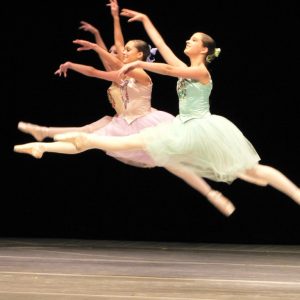
To increase their flexibility, ballet dance costumes are made of thin materials, are body fitting leotards, usually accessorised with tutus, and ballet pumps for the feet. Western classical dance styles have always evolved according to the day and age, with individual additions and combinations.
The focus on the facial and hand gestures is the most important and outstanding element of Indian classical dance forms.
Instruments: tabla, mridangam, flute, violin, veena, cymbals, harmonium, and such. The instruments vary according to the dance form depending on which state it is from. Vocals are used as a storytelling mechanism, usually in the language of ancient scripture.
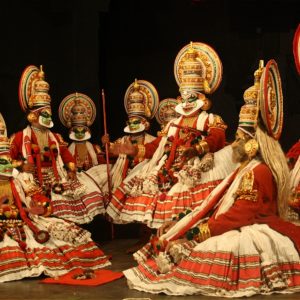
Costumes and makeup in Indian classical dance forms vary according to the character being portrayed by the dancer. Some dance forms, such as Kathakali, have an extensive makeup ritual that involves colouring the face and takes up to four hours. The costumes usually contain heavy
accessorising too.
Most classical Indian dance masters have stuck to the traditional styles of the dance form, and avoid introducing new elements into the routine.
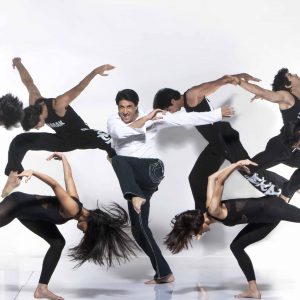
“My Motto is: Have Feet. Will Dance”
been synonymous to Bollywood dream sequences and exceptional thumkas on the dance floor since we were all little children glued to our television screens. Watching a fiery Madhuri Dixit and a sensual Karishma Kapoor battling it out on the dance floor was a scene that we yearned to mimic, always failing miserably in the attempt. We get up, close and personal with the choreographer that made all our hearts go chak dhoom dhoom
You started off your career when dance as a career was unheard of. Today, you have made it a viable career option. How did this progress happen?
The dance scenario was very different when I started off thirty years back. People’s perception was dance as an art; especially the western form was very conservative. When I decided to start dance classes, I had only seven students, five of whom were family and friends. But I was very sure that performing arts was my calling, and I wanted to use this as a platform for people to find themselves, realize their true calling and come to a space where they are not judged. Over time, people started understanding the power of dance to heal- mentally, physically and emotionally. Dil Toh Pagal Hai was the turning point in many ways. People appreciated my style of choreography, Bollywood was introduced to fit dancers for the first time and a unique blend of east and the west came into being.
People of all ages come to your dance classes today. Do you believe that everyone is capable of dancing?
My motto is ‘Have Feet. Will Dance’ which is what I stand by. In fact we’ve taken it one step further to ‘Have Spirit. Will Triumph’ as people with special needs also come and dance on stage. Kids from the age of four to my young at heart students even at eighty four come and dance! Dance classes are the best way to de stress, engage in physical exercise, learn various styles and have fun at the same time. Kids have improved at school because dance classes help them with focus and concentration. So many working people come just to relax and let go of all their worries. People make friends for life at dance classes. And at the end we give them a chance to perform on stage that gives everyone an opportunity to feel like stars. I’ve seen people’s lives change, their confidence and their outlook completely transforms!
Today, many youngsters are making their careers in dance. Do you think it has positive prospects in the future?
There is no greater joy than making your passion a profession. Today I have a strong team of instructors who have made a living through dance and are teach as a part of my dance academy across the world. The most important thing is to get the right training and taking time to learn yourself before going ahead and taking it professionally. Half – baked knowledge is the most harmful. Keeping this in mind, I started my full time one year (OYP) and part time half yearly (SHP) programs where I train students in my style of contemporary, introduce them to over ten dance styles where they train with international faculty, understand technique and get opportunities. Students from around the world audition for the OYP and get selected to become a part of my dance company, perform in musicals, teach classes and more.
You have pioneered dance movements in India. From larger than life Bollywood shows to the breath taking contemporary dance shows. What keeps your creativity going?
Music and dance is the reason for my existence! My dancers are my true inspiration. They work extremely hard and make my choreography come alive. Selcouth, my contemporary dance show really reveals the style of choreography closest to my heart. It is what people today refer to as the Shiamak Style, it’s actually a blend of indo contemporary and modern movement. I really feel at home on stage. So whether it is creating a colourful and vibrant image on stage at a Bollywood show or a pure dance based contemporary production, I love choreographing, singing and performing.
What do you have in store for dance enthusiasts now?
Winter Funk starts in October which gives everyone an opportunity to learn their favourite dance styles and perform on stage. I’ll be on a lookout for potential dancers who will win an opportunity to perform with my dance company at an award show. Audition for my full time and part time certification programs are in December and registrations for that have already started coming in. Three of my star Hip Hop dancers went to the Urban Dance Camp in Germany and trained with the biggest names. They’re now travelling the country teaching enthusiasts some amazing routines. My aim is always to keep dance relevant and spread the joy of dance!
Lights, Camera, Dance
Pick any Bollywood song that rocked the city with its moves. Any song. Are you thinking Dabangg? Or are you thinking Halkat Jawani? It doesn’t matter which one you’re thinking, because you’re thinking Ganesh Acharya.
What is your formula for success, and does age matter?
I think you should just work hard. Everything else, fame, money, success, itall depends on God. He has predecided everything. Your hard work is the only thing in your hand, and that’s all you should care
about. Let Him worry about everything else. For example look at the reality shows that are airing nowadays;nobody knew the people on themten years ago, and now they’re famous. They’re young and talented and they’ve already achieved fame. So the whole idea that it takes time and age and experience to achieve success, in my opinion, is just something people like to say. At the end of it, I believe, if you work hard, at whatever age, you’ll find success.
Not all actors are good dancers. How hard is it to train and choreograph non-dancers?
It is very easy to choreograph a non-dancer actor. In fact, it’s more difficult to choreograph an actor who
knows dancing. The challenge with a dancer-actor is that we have to put in more effort into
choreographing him. He’s already good. The question that arises then is how do we make him better? I
have dance assistants, who help me make an actor perform. It becomes comfortable then. We need to push them a little. Besides, I am very good-humored choreographer who likes to have fun at work. So this
makes the task a lot easier.
Which one of your previously done works are you particular proud of?
There is a lot of them: Ghatak, Chamma Chamma, Coolie No. 1. I’ve done 7000 odd songs till date. But if I have to pinpoint I’ll say it is ‘Chikni Chameli’. It was a difficult song for me to do too, and I’m very proud of how it turned out.
And what about a song from your competing choreographers?
Well, I look at their work and praise them, but I’ve never thought of any of their works as top notch or at all, because I’m too focused on myself and my work to pay attention to someone else’s enough to find a favourite in it. I’ve always been a workaholic, never indulged in any inebriation. I’ve always been extremely passionate about my work.
How do you tell an actor he’s going abysmally wrong?
As a choreographer, I’m always smiling, because I’m so happy when I’m working. So even when I’m reprimand someone, I’m do it with a smile, because that’s just the kind of person I am. I believe you only need a smile and some patience to get your work done.
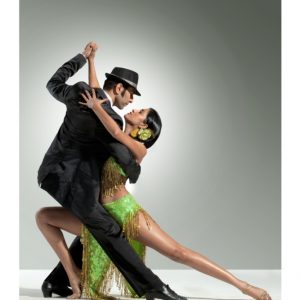
“Keep Your Attitude On The Ground”
Having choreographed B-town celebrities like Priyanka Chopra and Hrithik Roshan, Sandip Soparrkar has branded his own personal signature in the world of dance. He gives us a little peek into the foot tapping rhythm of his life
When did you first decide to pursue dancing professionally, what was it that drew you to it?
I considered taking dance as a profession only when I moved to India from Germany, after completing my dance course. Before that I was dancing as a hobby. I would compete in European championships and dance for several hours in a day, but never thought of taking it up as a profession back then.
What are the key points one should keep in mind if they want to pursue dance as a profession?
Choose to learn dance from a professional. A good dancer is not always a good teacher. Just like choosing a good institution for your education, it is equally important to do so for the art that is dance. According to me, it should be an art that is to be taken seriously, more than just used as an activity to spend time.
You chose to pursue Latin American and Ballroom dance in a time when these forms weren’t that popular in India. What was your inspiration to do the same?
I was living in Germany then and Latin and Ballroom dances are classical dances forms of the West. They were the only dances forms available to me right then. I really wanted to learn Indian classical dance, but in 1970, when I started, classes for the same were not popular in Germany.
Which of all the Latin American dance forms is the most challenging one according to you?
The slower the dance, the more difficult it gets as technique is very important then. According to me, Rumba is very difficult to perform because it isn’t just slow but the emotions involved in the dance are that of love and sensuality, which is rather difficult to achieve in the form of dance.
Which of your previously done choreographies are you particularly proud of?
I love ‘Daarling’ (Saath Khoon Maaf ), ‘Fire’ (Kites) and Britney Spears’ ‘Womanizer’. I also loved my stage show choreography of ‘Enchanted Love’, a musical I did to welcome the Korean Prime Minister to India.
What tips would you give to a budding Latin American or Ballroom dancer?
Practise, practise and practise. That’s all that a dancer needs. A dancer has his feet on the ground and doesn’t dance in the clouds. Hence, keep a check on your attitude, and keep that firmly on the ground as well.
the Crew Code
Choreographer of Kings United, Suresh Mukund, talks about the highs and lows of dance in India and life of dance crew choreographer
What inspired you to form the dance group?
I used to be a solo dancer before I started a dance crew. In 2006, I saw a performance of a dance troupe called as Philippine Allstars on YouTube in the World Hip Hop Championship. I was so inspired by them and that’s when I thought of making my own crew.
What are the challenges that you have faced as a dance crew choreographer so far?
Around 8-9 years ago, dancing as a career was unheard of. Every dancer and choreographer has faced problems due to this. A career in dance does not offer the stability and consistency that a regular job offers, resulting in a lack of family support which is understandable considering parents are only really concerned about their children. But the situation today is much better than it used to be. Parents have become more supporting and encouraging now.
As a choreographer one of my biggest challenges has been to build a strong trustworthy relationship with all of my troupe members. These dancers trust and rely on their choreographer for their success and future careers. That makes it our responsibility to make sure that everyone earns their bread and butter and has a bright future ahead.
Why do you think that dance crews in India do not gain as much recognition as the ones abroad?
There is much less awareness about dance in India than abroad. It is still an emerging field here. It will take some time for dance crews in India to gain the recognition that the international dance crews enjoy.
What makes your crew stand out from the others in the country?
We believe our choreography is our USP. We try to incorporate blow up and tricks in our dance while giving it an Indian flavour.
How does crew choreography differ from single person choreography? What is the most important thing to remember while choreographing for a crew?
There’s a huge difference as in a solo and group choreography. According to me, the most important aspect to consider while choreographing is creativity and originality. Also, in a crew, we need to match he dance styles of all the members in the group.
What’s the best part about being a choreographer?
We get to design a story in dance by putting together steps and movements of dancers that coincide with musical accompaniment. For me, that is the best part of my job. What advice would you give to aspiring choreographers and their dance crews?
Always believe in yourself. Be Creative. Be original and find a good group of friends that share your passion. That will push you to go beyond your craziest dreams and achieve them.
Headspinin’ the FreaknStylz way
Gautam Jeewan, leader and head choreographer of India’s first-ever all-Bboy crew, FreaknStylz, chats about the trials and lives of dance crew choreographers.
What inspired you to be a part of a dance crew?
FreaknStylz was a dance initiative started by Bboy Venky (Venkatesh) in July 2007 and it was the first ever all-Bboying crew in India. Being one of the initial members, after Venky left, I took over as the leader and head choreographer of the team in 2009. My inspiration to be a part of the team was the fact that I felt that this dance form was the most visually attractive dance form that I had ever came across. Unlike other dance forms, Bboying uses all parts of the body in its base moves; be it spinning on one’s head or balancing one’s body weight on one arm and dancing on beat.
What are the challenges that you have faced as a dance crew choreographer so far?
The biggest challenge for us as a dance crew and me as a choreographer has been to gain a sense of acknowledgement and respect from the non-dance community. Most of the times we as a crew are addressed as ‘Stuntmen’ or ‘Circus people’. Thus, in our choreography we try and make it look as rhythm and beat oriented as possible so that the audience and viewers realise and accept this as a genuine form of art.
Why do you think that Indian dance crews do not gain as much recognition abroad?
Well on the contrary Indian crews are gaining recognition abroad off late. We started representing India on the international stage as early as 2010 and we were the first Indian crew to do so at an international championship in Taipei city, Taiwan. Over the last few years we have travelled in more than 7 countries and represented in over 16 international competitions, solo and crew categories. Our highlight was being placed 3rd in South Asia Qualifiers for Battle of the Year International competition held in 2012 which has more than 120 countries participating. 3 years on, other crews have taken note of our international travels and have started travelling and competing abroad too.
What advice would you give to aspiring choreographers and their dance crews?
The only advice I would give is dance as much as possible and be happy. Money, fame, success and competitions are just by products of a culture we live in, but the reason why we all started should never be forgotten. So basically just dance, have fun, live for the moment and enjoy the music and let it guide you to bring the best out of you. You will only dance for a limited time and one day look back at how much you were able to explore your art; aim at being satisfied at that age.
Choreographer to Underdog Kombat, the dance crew that started off a theculture. com, a website focused on promoting hip hop culture in India, Paritosh Parmar speaks about crew life and choreography
What inspired you to form the dance group?
Back in 2007, a friend, Keith Dias and I were watching a movie called ‘You Got Served’. The plotline has a danceoff between two rival dance crews in a competition. We were so inspired by it that we started our
own crew in that same year and named it Underdog Kombat a.k.a UDK.
What are the challenges that you have faced as a dance crew choreographer so far?
The biggest challenge so far has been to keep coming up with something new. It’s very difficult to make routines, especially in a Bboying crew where all the individuals are different and are masters in they own style.
Why do you think that dance crews in India do not gain as much recognition as the ones abroad?
Unlike Bollywood, classical, folk, hip hop is just been around in India for 8-10 years. I think that may be the reason for the current situation. But things are changing, we are changing them. When we started off there were only two Bboy crews in Mumbai; today we have over 50. We have a large underground Bboy community in the city; it’s just that most people are unaware of it. Another reason for the lack of recognition is that is that unlike sports, the Bboy scene here is not commercial yet. The South Korean Government itself promotes hip hop and is involved in organising jams like R16 Korea, which is one of the biggest hip hop festival in the world.
The only support we have received in India till now has been from brands like Spykar and Monster drinks. We respect these brands and are grateful for their persistent involvement to this cause.
What makes your crew stand out from the others in the country?
Being one of the first crews to start in India, each member of our group has a unique style. Ranging from 15 years old to 28 years old, we have an amalgamation of new-age ideas and knowledge that comes from experience. We have also had the opportunity to represent India in many different countries. I think that is what makes us different from other crew in the country.
What advice would you give to aspiring choreographers and their dance crews?
Just be yourself and don’t be in a hurry. Everything takes time. Keep calm, and respect your work.
Bollywood has always been all about glamour, grandiose, and the celebration of song and dance. It was only time that the small screen followed their footsteps to engage the heavily musical Indian audiences. Take a tour through India’s recurrent fad, dance reality shows.
Dance reality shows have been the norm on Indian television screens for a while now. And here’s why. They have proven to be the perfect amalgamation of drama, art and emotion. They have a little bit of everything, be it sweet love stories or deep-rooted rivalries. And of course, just one dance reality show would ever have been enough. So we have a plethora, and funnily enough, each comes with their own unique flavour.
CELEBRITY LOVE:
Jhalak Dikhla Jaa gives us the perfect glitterladen star love where we see our favourite celebrities
teaming up with professional choreographers and showing us their dance moves. Nach Baliye adds love
and passion and real-life jodis to the celebrity element, giving us the visual treat of our small-screen darlings matching steps with one another and showing us what love can do. And we don’t care that most of them can’t keep up with a beat, do we? On the contrary, their occasional clumsiness just makes us adore them that much more. After all, it makes for perfect television. Grand sets, Bollywood numbers, glittering costumes and celebrity judges, what’s not to love? What’s more, with the increasing number of Bollywood personas climbing up to the silver screen to judge these shows and promote their upcoming films is just the cherry on the cake. But that’s not all. Indian television has always been known to provide something for every type of viewer.
TALENT COUNTS
Passionate viewers who prefer to watch stellar performances and good dancers over celebrities showcasing subpar performances have an option of dance reality shows too. Shows like the ever-popular Dance India Dance and as of more recently, Dance Plus, have had a revolutionised the lives of amateur and struggling dancers across the country. These dance reality show competitions provide dancers with a nationwide platform to showcase their art, and with valuable inputs from celebrity judges and
choreographers, learn and grow as dancers. Not only do these shows allow a platform for amateur dancers, these shows have also been known to generate careers for their participants, which is always a plus.
Around the World in Dancing Shoes
Not all of us are gym freaks and some of us can barely get ourselves out of bed every day as we muster enough strength to get going to the workplace without groaning about frequent backaches and other
SO YOU THINK YOU CAN DANCE
Not many competitions have been as popular as SYTYCD in the recent years, especially thanks to AXN broadcasting the programme to all avid dance enthusiasts all over the world. Even Lauren Gottlieb, season 3 contestant of the show found her newfound fame in the Bollywood dance favourite Anybody Can Dance 2, playing the character of one of the most graceful dancers of the Fictitious group that makes it all the way to the World Dance Hip Hop Championship finals. While the show focuses on dance styles that can be termed as ‘Western’, even Bollywood, as a dance style, has become a huge crowd favourite.
WORLD BALLET COMPETITION
The World Ballet Competition was inaugurated in 2007 by Founder and Executive Director of Central Florida Ballet, Vasile Petrutiu. In the World Ballet Competition, dancers from across the globe and of the highest calibre are placed under intense scrutiny of a world renowned judging panel. During several days of competition rounds, dancers fight to make it through to the final round where the winners are then rewarded with cash prizes, scholarships, job offers, and international recognition.
WORLD HIP HOP CHAMPIONSHIP
With India coming in third out of bed every day as we muster enough strength to get going to the workplace without groaning about frequent backaches and other place this year, World Hip Hop
Championship was made even more popular with ABCD 2. With more than 3000 students and 50 countries participating for the gold every year.
ELSA WELLS INTERNATIONAL DANCE CHAMPIONSHIPS
Elsa Wells was described as a dance goddess by her peers and contemporaries alike, and she was also the founder of the Elsa Wells International Dance Championships in 1953. She was one of the great female coaches of her time who “felt like a second skin” when dancing with her students. There are two main series, one for professionals, and another for amateurs, plus various
Not all of us are gym freaks and some of us can barely get ourselves out of bed every day as we muster enough strength to get going to the workplace without groaning about frequent backaches and other ailments, even in the prime of our lives. We give you a quick lowdown on how dance can be the best form of exercise that your body can get, making it as fun and engaging while you’re at it
The stereotypical image of a day in the gym ranges from a couple of buffed up males devoting time to stand in front of mirrors and grunt loudly while lifting weights to conventionally skinny women running marathons on treadmills with their favourite bands dropping the bass on their earphones. This is where the contemporary times roll in and remind you that not every gym routine has to be this mundane and routine. In today’s day and age, Zumba is synonymous to fitness as food is synonymous to living. There are several other forms of exercises that use dance as the core factor to get in shape, thus aiding you in working out in the most fun way possible. Here are a few essential benefits of using dance as a fitness regime
GROUP THERAPY
When you’re a part of something larger, it invariably increases your motivation to work harder. Man is a social being and habitually is accustomed to companionship and the notion of living in a society is ingrained in him since the very day that he is born. Joining a dance class gives you a sense of belonging in a group where every member shares your passion for the art.
TRAINING YOUR MIND
A personal gym membership will entail you creating immense discipline to religiously focus on different parts of your body to give it equal attention and exercise; something that everyone may not be able to follow. When you dance, nearly every part of you is in motion and is being toned without you having to consciously pay attention to the same. This way, it becomes more of a natural order than forced concentration.
THE BEAUTIFUL SOUND OF MUSIC
This is the most self explanatory of them all. Music brings the world closer and the added advantage of giving your ears the aural treat it deserves. This is proven to destress your mind and the quickened pace
of your heart to the beats gets your blood pumping with adrenaline, invariable giving you the much needed release of a perfect workout
Gone are the days when learning the art form native to a region was deemed impossible due to great distances between countries. Thanks to technology making things accessible in nearly every field of communication that there is, learning a dance form now is not only easy but almost possible in every major city in the world. We bring you a list of some of the best dance institutes and courses that you can apply to in India as well as abroad
INDIA
THE TERENCE LEWIS ACADEMY, MUMBAI
Known by every dance enthusiast as one of the effortlessly brilliant dance choreographers in the country, The Terence Lewis Academy is one of the most sought after dance institutes in the nation which offers, Professional Diploma Foundation courses, at a graduate and under graduate level, (ranging from 1year to 3 years). Offering a rare combination of dance disciplines, combining the western and Indian dance forms, the Diploma in Dance-DID offers a holistic experience and an overview of Dance as an all encompassing entity. Along with this, TLA also offers a prep course with Terence Lewis for basic preparations for TV dance reality shows, in order to train for the wave of reality shows hitting the silver screen in the recent years.
FOR MORE DETAILS VISIT: HTTP://WWW.TERENCELEWIS.COM
Lourd Vijay’s Dance Studio, Bangalore Started in 1997 by Lourd Vijay, this institution believes in the passion for dance and channelling the spirit of a passionate team of people who make the team as vibrant and hardworking as they are. Lourd Vijay revolutionized Indian-western dance over and over again in India – most notably, by introducing Salsa in 1997. The kind of dance styles that you can opt for in the institution includes: Jive, Contemporary, B-Boying, Salsa, Hip-Hop, Bollywood, and Ballet. For more details, visit: http://lvds.in
GANDHARVA MAHAVIDYALAYA, DELHI
They say that the heart of the country belongs in its capital and there is no greater truth than that when it comes to the rich, cultural heritage of Delhi that encompasses India’s humble roots. Dances in India are incomplete without the elegance and grace of Bharatnatyam, Mohiniyattam and other classical forms. Gandharva Mahavidyalaya offers courses of study approved by the Akhil Bharatiya Gandharva Mahavidyalaya Mandal (ABGMV Mandal). It has nearly 1200 affiliated institutions and 800 Exam centers across India. For more details, visit: http://abgmvm.org
ABROAD
JULLIARD, NEW YORK
There is no possibility of a dance school list ever making it anywhere without Julliard being at the very top of the same. Considered as the holy grail school of dance, Julliard is the world’s finest academy for the quality of its education and intensive training in the performing arts. The Dance Division offers four-year undergraduate programs leading to a Bachelor of Fine Arts (B.F.A.) with liberal arts requirements,
or a Diploma without liberal arts requirements. Most students in the Dance Division pursue the Bachelor
of Fine Arts (B.F.A.) degree. For more details, visit: http://www.juilliard.edu/degrees-programs/dance
THE SCHOOL OF AMERICAN BALLET
The official training academy of the New York City Ballet, The School of American Ballet was founded by choreographer George Balanchine and philanthropist Lincoln Kirstein in the year 1934. The admission to SAB is by auditions only and more than 450 boys and girls, ranging in age from six to eighteen, attend classes during the School’s ten-month Winter Term. A five-week Summer Course attracts an additional 200 of the nation’s top ballet students. For more details, visit: http://www.sab.org/
LONDON CONTEMPORARY DANCE SCHOOL
Known for training some of the best contemporary dancers in the world, LCDS is part of The Place, and a founding affiliate of the Conservatoire for Dance and Drama. The School’s degree programmes are validated by the University of Kent. It offers a three year undergraduate programme leading to a BA (Hons) in Contemporary Dance and Postgraduate Diploma in Contemporary Dance.
For more details, visit: http://www.lcds.ac.uk/
Volume 5 Issue 3






















